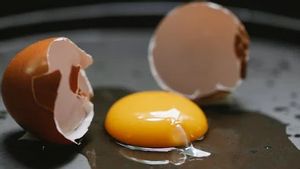JAKARTA - TikTok is looking for ways to keep its social media safe from hoaxes and dangerous challenges by conducting a new study. It aims to better understand youth involvement and establish better policies to protect against the associated harm.
Lately, these two trends have actually caught the attention of TikTok. Last year alone, in Italy a 10-year-old girl died after taking part in the Blackout Challenge on the app, which led Italian authorities to force TikTok to block the accounts of any user whose age could not be verified.
Then, earlier this year the popular Milk Crate Challenge, also resulted in many people suffering serious injuries after trying to climb a pile of plastic crates, while other concerning trends include the Benadryl challenge, waxy face, cracked back challenge and many more.
Obviously, there are some major problems here. It's important for TikTok to address these elements wherever it can, in order to limit the potential harm it can cause further.
Further citing Social Media Today, Thursday, November 18, the study conducted by TikTok combined responses from more than 10,000 teenagers, parents, and teachers from several countries including Indonesia. They were asked to provide TikTok with a broad insight into the various elements at play.
Based on this, TikTok worked with Praesidio Safeguarding, an independent protection agency, to gather key findings and recommendations to help improve the process.
The teens were asked about the level of challenge risk they had seen online recently, not necessarily on TikTok. About 48 percent said the challenge was safe, 32 percent said it had little risk and 14 percent described it as risky or dangerous.
Respondents said three percent of the challenges were very dangerous, while 0.3 percent said they had taken part in the challenges they categorize as such.
The study found that 46 percent of teens wanted more information and help understanding the risks of challenges, while 31 percent said they felt the negative impact of hoaxes related to self-harm and suicide.
Recognizing and dealing with hoaxes is not always easy. 37 percent of adult respondents said they found it difficult to talk about self-harm and suicide due to hoaxes without grabbing their attention.
TikTok says it has removed the hoax and is taking action to limit its spread, but plans to do more. This will remove the "alarmist warning" video about the fake challenge of self-harm.
"Research shows how warnings about self-harm hoaxes, even if shared with intent, can have an impact on the well-being of youth. While we have removed and taken action to limit the spread of these kinds of hoaxes, to better protect our community, we will begin removing alarming warnings about them because they can do harm by treating self-defeating hoaxes as real," TikTok said.
"We will continue to allow conversations that seek to dispel panic and promote accurate information."
Additionally, other security enhancements that TikTok has made include extending technology that helps alert their security team to sudden increases in infringing content linked to hashtags.
"Whenever a user searches for content that links to a malicious hoax or challenge, they will see a warning label," TikTok said.
The company is even working with clinical child psychiatrists and behavioral scientists to improve label language. Users seeking malicious hoaxes and challenges will be encouraged to visit the TikTok Security Center.
Meanwhile, if the search is related to suicide or self-harm, they'll see sources of information such as contact details for the National Suicide Prevention Helpline.
The English, Chinese, Japanese, Arabic, and French versions are automatically generated by the AI. So there may still be inaccuracies in translating, please always see Indonesian as our main language. (system supported by DigitalSiber.id)













